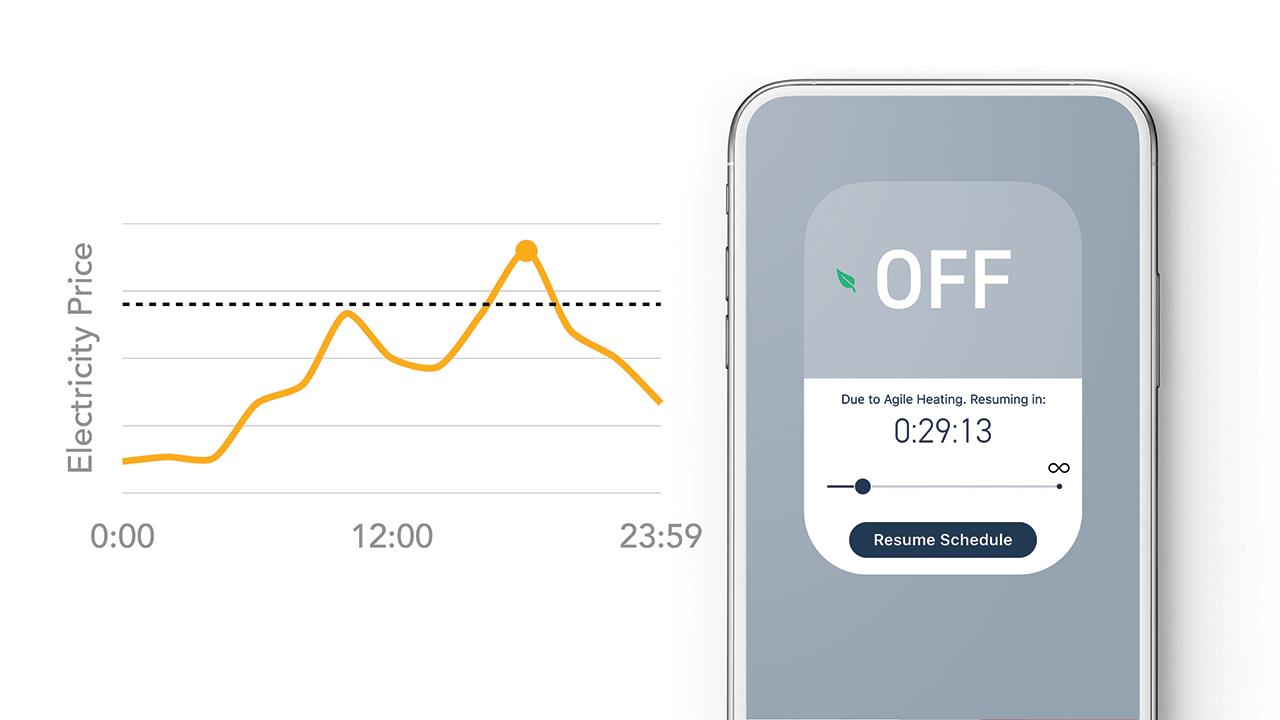

All major innovations begin with a convergence of technologies. In the energy sector, we’re on the cusp of the next innovational shift, and it happens when time-of-use tariffs converge with smart-controlled heat pumps.
Removing fossil fuels
Most of a home’s energy use comes from heating and cooling, which is typically powered by fossil fuels. If Europe wants to end its reliance on fossil fuels and prepare for a renewable future, home heating is where the change needs to happen.
Heat pumps are on a double-digit growth trajectory and on the verge of mainstream adoption. The energy sector already understands its potential to end our addiction to fossil fuels, but what about everyone else?
Mainstream adoption has been held back by the high initial investment that a heat pump requires, despite the promise of lower energy bills. Customers are however unsure if this investment into a heat pump will pay off in the long run.
This is where the convergence of two technologies will begin to offer customers a huge opportunity, one that the energy sector has never seen before. The combination of a smart controlled heat pump and a time-of-use tariff will lead to a tipping point for anyone in doubt about the upfront cost of heat pump technology.
Dynamic heating explained
In a renewable electricity market of intermittent sources, volatile pricing is based on the availability of supply provided by renewables. When the supply of electricity cannot match the demand, the price of energy increases. Inversely, when supply outstrips demand, the price of energy is lowered.
Customers can actually take advantage of these times of high and low pricing through the adoption of time-of-use tariffs.
Electric vehicles already work with chargers that sync to tariffs and only charge the car overnight or during times of low pricing. Imagine a smart thermostat and heat pump doing the same thing, actively seeking these low prices to do the bulk of a home’s heating, or fill up a hot water tank.
Smart controllers and thermostats are not new technologies. They’ve had 10 years of growth to learn user habits, and perfect efficiency and design and, more importantly, start building the steps for the future of home energy.
Smart-controlled systems use times of lower priced energy to heat buffer storage and hot water tanks. In times of high energy prices when the supply can’t meet demand, a home can make use of the stored heat and hot water to avoid buying expensive energy. This reduces energy costs without ever compromising on comfort.
Giving flexibility to the grid
According to government statistics, 37.8% of electricity is already powered by renewables. Security of supply cannot be guaranteed by these sources, which limits the potential for that percentage of renewables to grow.
While we can’t control when the sun shines or when the wind blows, we can control the consumption in homes to match those times. We need to match the demand of energy to the supply that is available, in order to grow our energy network’s share of renewables.
The solution to this comes from time-of-use tariffs and smart-controlled heat pumps actively seeking to only use electricity when the price is low. By creating homes with dynamic heating and cooling that seeks and avoids the higher priced energy times, homes will come closer in sync with the supply of renewables.
This allows the 37.8% figure to increase, as the intermittent renewable sources will be able to match the demand of homes connected through the tariffs.
The convergence of technologies like this marks the beginning of a significant move towards the type of energy we consume, and the way we consume it. The end result is an energy system that not only harmonises its supply and demand, but paves the way for a more sustainable and renewable energy grid.
If you'd like to keep up-to-date with the latest developments in the heating and plumbing industry, why not subscribe to our weekly newsletters? Just click the button below and you can ensure all the latest industry news and new product information lands in your inbox every week.